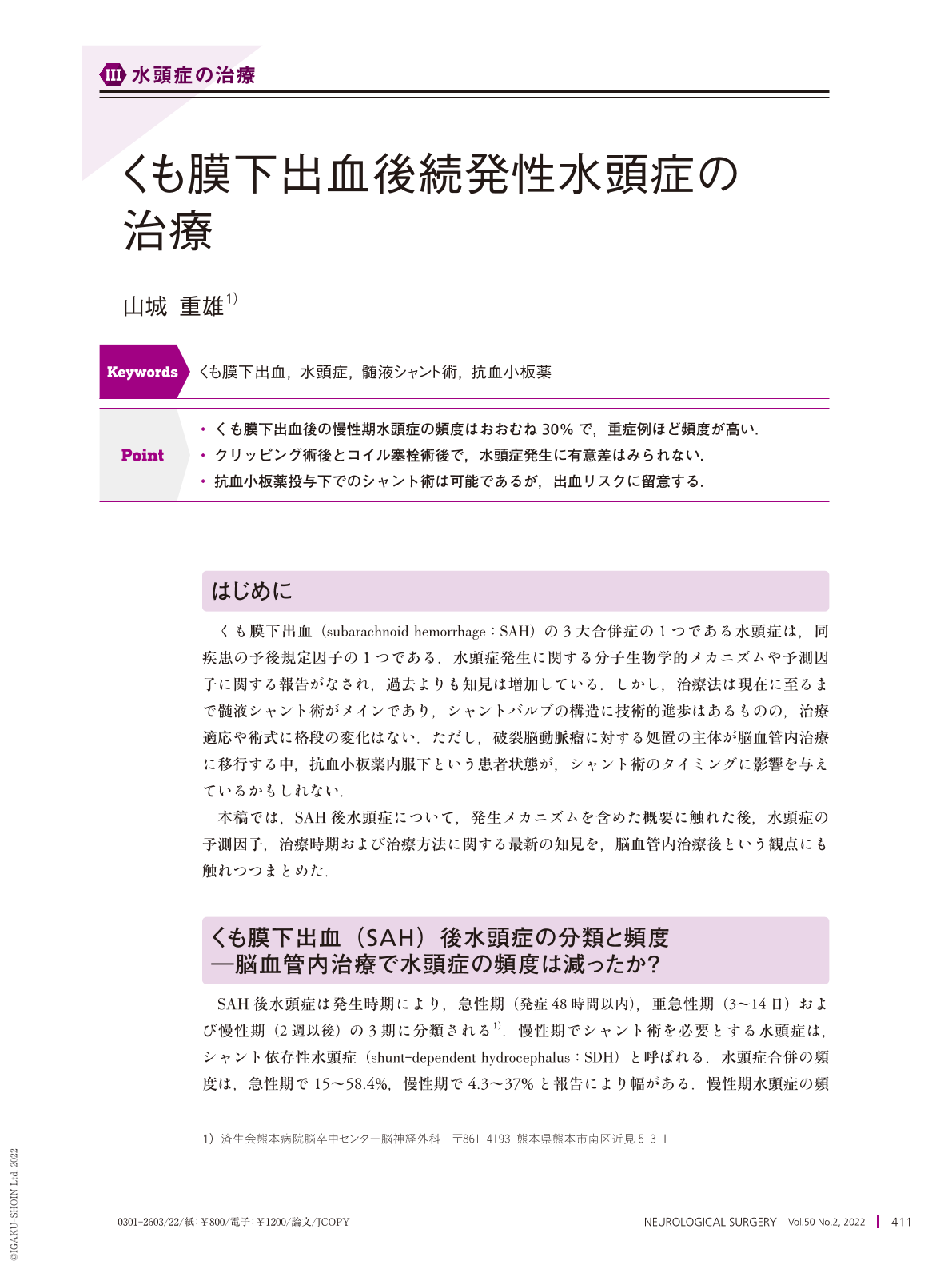Japanese
English
- 有料閲覧
- Abstract 文献概要
- 1ページ目 Look Inside
- 参考文献 Reference
Point
・くも膜下出血後の慢性期水頭症の頻度はおおむね30%で,重症例ほど頻度が高い.
・クリッピング術後とコイル塞栓術後で,水頭症発生に有意差はみられない.
・抗血小板薬投与下でのシャント術は可能であるが,出血リスクに留意する.
Hydrocephalus is one of the major complications secondly occurring with or after subarachnoid hemorrhage(SAH). Hydrocephalus can be classified into acute(≦ 48 h), subacute(3-14 days), or chronic phases(≧ 2 weeks)in which a cerebrospinal fluid(CSF)shunt is required as the curative treatment at the rate of approximately 30%. On the mechanism of hydrocephalus development, it is generally accepted that an inflammatory reaction and the ensuing fibrosis process impede continuous CSF flow outward to the sinus, terminally from arachnoid granulation, leptomeninges, or ventricle walls, in addition to the mechanical blockage due to SAH clots. Several factors associated with the severity of SAH, such as a high Hunt and Hess grade, intraventricular hemorrhage, and a ruptured aneurysm in the posterior circulation also predict the development of shunt-dependent hydrocephalus. The predictive scoring system is available. Effective treatment of hydrocephalus still involves the use of CSF shunts. No superiority between ventriculoperitoneal and lumboperitoneal shunts has been established. Even during oral, single antiplatelet treatment after coil embolization for ruptured aneurysms, curative shunt operation is possible with low frequency of hemorrhagic complications. Hydrocephalus should be diagnosed early and treated appropriately to improve the functional outcome of the patients after SAH.

Copyright © 2022, Igaku-Shoin Ltd. All rights reserved.


